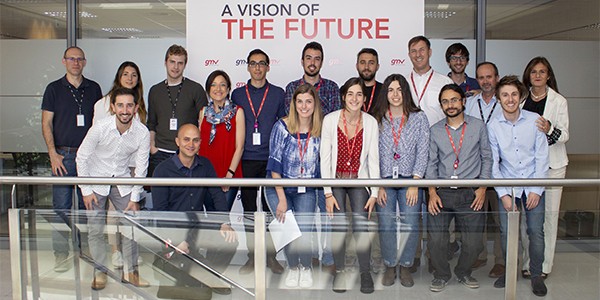NAVIPHY celebrates its first year of activity with a meeting at GMV

GMV, the Research Institute of the Hospital Universitario La Paz (IdiPAZ), the Virtual Reality and Modelling Group (Grupo de Modelado y Realidad Virtual: GMRV) of the Universidad Rey Juan Carlos and the Canary Island Healthcare Research Foundation (Fundación Canaria de Investigación Sanitaria: FUNCANIS) make up the consortium formed for the research project “Navigation, physical simulation and imaging in intraoperative procedures”, NAVIPHY. Its purpose is to achieve greater precision in brain, breast and maxillofacial surgery, “developing surgical simulation algorithms and exploring the use of intraoperative imaging to upgrade the surgical simulator we have developed”, explains Carlos Illana, GMV’s Head of Product. To weigh up the work carried out in this first year of the project and come to an agreement on the pivotal points for future effort, representatives of the various working teams met up in a seminar held in GMV’s head office.
Information technologies and precision imaging now enable surgery procedures to be planned and simulated beforehand and can also guide specialists during the actual surgery, in both cases helping to improve results. Nonetheless, when dealing with soft tissues like the brain, there remains some work to be done in order to be able to help surgeons operate with greater precision. Collaboration between healthcare and technological personnel, as is the case in NAVIPHY, is key here. After all, one of the biggest challenges of image-guided surgery is precise modeling of any changes to the patient’s anatomy during the operation. To achieve this it is necessary not only to develop surgical-simulation algorithms, in order to ensure greater control of the surgical procedure and result, but also clinical expertise and interpretation skills to guide and advise the research while also assessing and vetting the applicability of all developments.
To this end the consortium’s multidisciplinary team is now working on evaluation of the use of intraoperative images when radiotherapy is being administered to the cancer site after tumor removal within the operating theater. It is likewise exploring the use of multimodal imaging techniques (CT, ultrasound, etc) for a better anatomical representation of patients as well as surgical navigation tools to facilitate up-to-date and individualized information, thus progressing towards personalization of the treatment.
GMV, in collaboration with the specialists Pedro Lara and David Macías, has developed a surgical-navigation module in the intraoperative radiotherapy device radiance™ in order to guide breast cancer surgery and application of intraoperative radiotherapy, in use now for two years. In the NAVIPHY project GMV is tackling the challenge of creating adaptations for other complex surgical procedures such as maxillofacial and brain in which precision is a sine qua non of success.
NAVIPHY is a one-million-euro, 45-month project falling within the Ministry of Science, Research and Universities’ research challenges R&D call and subsidized by the European Union (EU) through funds of the European Regional Development Fund (ERDF).
Funded by: ERDF /Ministerio de Ciencia, Innovación y Universidades – Agencia Estatal de Investigación/ _Proyecto (RTC-2017-5878-1)